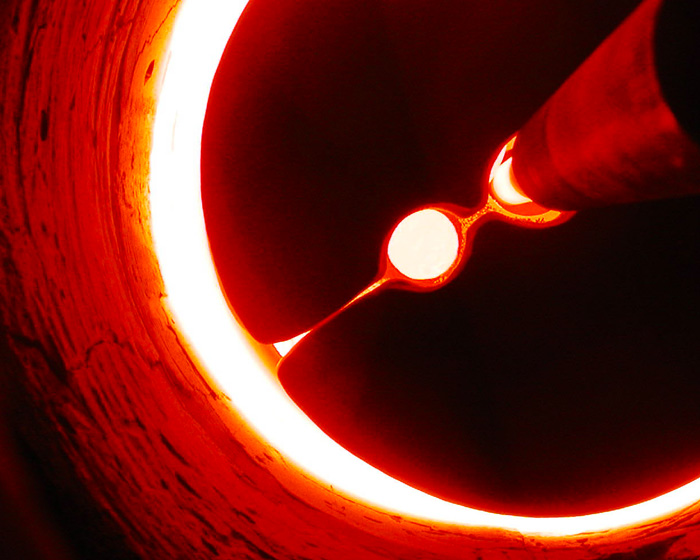Delivering plutonium safely for a DARHT experiment
Nuclear Materials Science team is on target

The Nuclear Materials Science Group in the Materials Science and Technology (MST) Division conducts fundamental and applied studies on plutonium, which puts it at the intersection of the Lab’s science and weapons priorities. Based on knowledge gained from leading its own experiments, the group can expertly facilitate experiments for others within the limits of the Lab’s Plutonium Facility.
The experiment
Moonshine looked for ways to rapidly change the thermodynamic state and phase of a plutonium sample. The MST team helped coordinate the safe containment and delivery of plutonium samples from the Plutonium Facility to the Lab’s DARHT facility for the experiments, and the team now has a role in analyzing the outcome.
Can we do this?
The inspiration for Moonshine was SPECTRE (Series of Plutonium Experiments to Capture Temperature and Radiochemical Evidence), a multi-lab collaboration that reintroduced plutonium testing to the weapons complex using a research reactor at Sandia National Laboratories. Foley and MST’s Dan Olive took what they learned from leading the SPECTRE experiments to enable Moonshine.
What did it take?
Communication with numerous stakeholders was vital to Moonshine’s success, Olive said. For instance, the Integrated Weapons Experiments Division designers of the Moonshine experiment vessel shared drawings and 3D-printed prototypes before the actual vessels were ready, which allowed the MST team to practice loading plutonium samples and figure out the order of operations.
“Conducting any experiment with plutonium is going to be difficult; shipping the material outside of [the Lab’s Plutonium Facility] is where it gets really interesting. You have to simultaneously keep people safe, which means encapsulating the material, but in a way that still lets the experimenters collect the data they need,” Olive said. “Anything that gets designed needs to be something that can be assembled in multiple layers of gloves inside a glovebox, then finally loaded into containment that is radiologically clean on the outside for shipment.”
The happy customer
Moonshine’s lead physicist, Matt Snowball (X Theoretical Design Division, XTD), said this was the first time the Primary Physics and Design Group had worked closely with the Nuclear Materials Science Group on a big project.
“Many of us in XTD are familiar with the work [the group] does and the valuable experimental data they gather that directly and indirectly feeds into the work that XTD does, so their organization was not a stranger to us,” he said.
Nuclear Materials Science staff were brought into Moonshine planning meetings early in the process. “Obviously, their experiment SPECTRE was the main motivation for Moonshine, so that was a huge contribution for which they deserve a ton of credit,” Snowball said.Not only did the group prepare plutonium samples for the experiments, but now they are doing much of the post-analysis of the samples from Moonshine.
And their expertise is needed for Moonshine-II. “We very much look forward to our continued collaboration on these complicated, but critical, experiments,” Snowball said.
Programmatic support for Moonshine was largely provided by the Office of Experimental Sciences (Hydro and Subcritical Experiment Experimental Support and Primary Assessment Technologies programs) and the Weapons Engineering Program Office. Technical and operational support came from across the Laboratory with major contributions from Integrated Weapons Experiments, Dynamic Experiments, Materials Science and Technology, Nuclear Process Infrastructure, Prototype Fabrication, Weapon Stockpile Modernization, Radiation Protection, Weapon Systems, Weapons Facilities Operations, Computational Physics, and X Theoretical Design divisions.
The big picture
“Pretty much everything we do in Nuclear Materials Science is directly in support of the Weapons programs. We work with scientists and engineers in the Pit Technologies Division, for example, to diagnose manufacturing issues and implement our science-level understanding of plutonium to suggest process improvements and anticipate manufacturing roadblocks,” said David Wayne (Materials Science and Technology Division), who may be involved in characterizing Moonshine samples. “The discipline of plutonium science demands both a long view—taking into account the past efforts as far back as the Manhattan Project; and a wide view—one which necessarily takes a multidisciplinary approach to understanding the materials to be used in weapons applications.”

Dual-Axis Radiographic Hydrodynamic Test
The world’s most powerful x-ray machine for analyzing nuclear weapons was built at Los Alamos in the late 1990s. It generates a sequence of x-ray images showing the dynamic events that trigger a nuclear detonation. DARHT experiments, in combination with accurate computer simulations, help scientists guarantee—without nuclear testing—that stockpiled nuclear weapons would perform as specified if they were ever needed. At DARHT, scientists study mockups of nuclear weapons to support modernization efforts and collect data from weapons physics experiments for simulation computer codes.



